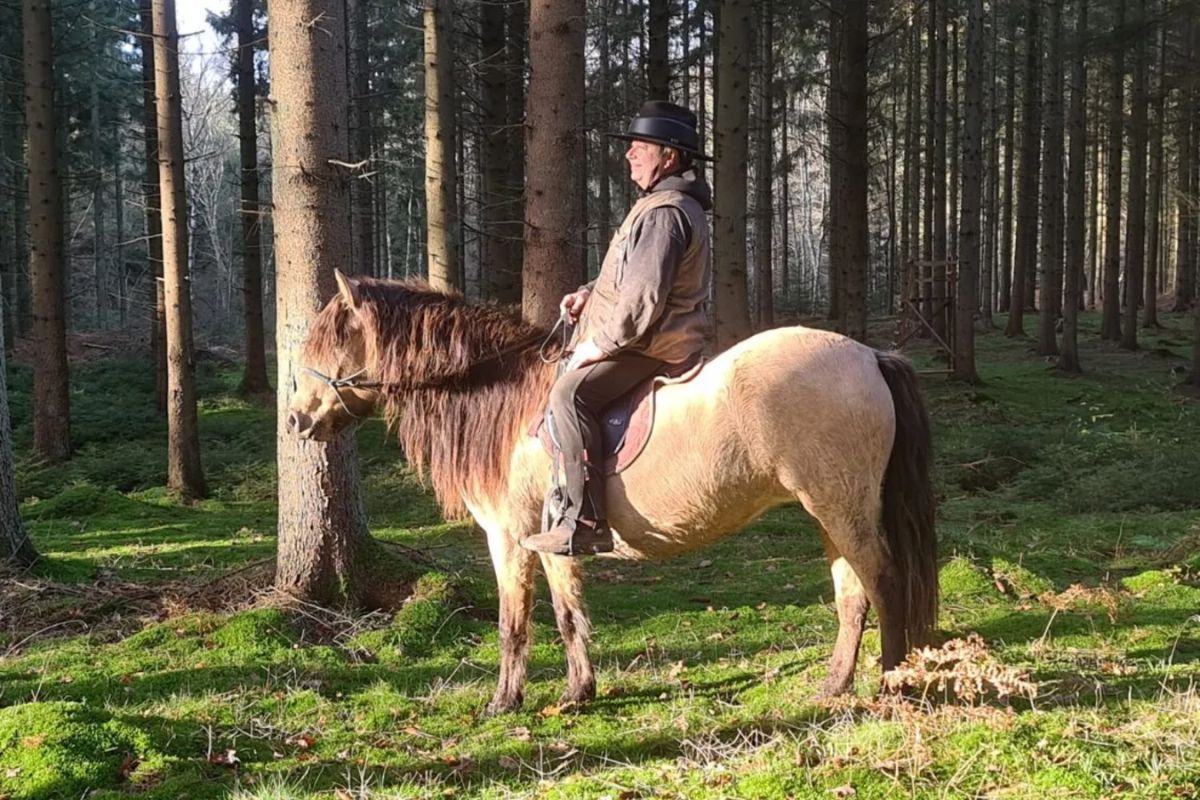Menu

For hundreds of years, there's been a tradition to name a horse after the region it originates from. The breed, named after Aegidienberg in the German Rhineland region, is no exception – however, with one significant detail: This modern equine breed with the lengthy name isn't created from a local population of horses. Instead, it's the result of crossbreeding two breeds that were imported from abroad.
Also check out: Irish Draught: The hidden talent
Walter Feldmann is the bloke who had the bright idea to create a crossbreed that retained the best qualities from two very special breeds. He had loads of experience with Icelandic horses in particular, as he had been one of the largest importers in Germany. The task was to create a unique horse that wasn't just comfortable to ride – but also a horse with a good temperament, good stamina, and a horse that was suited to the local climate.
For the breed to meet the first criterion, it needed to have a calm gait. Ideally, one that was natural. Even though some breeds in principle can be trained for multiple gaits, there's one breed that is particularly characterised by its innate talent for the tölt; the smooth, four-beat gait that can be executed at both slow and fast paces. In the horse's homeland, it is said that the tölt is a gift from the gods to humans.
It's obviously the popular Icelandic horse, which since its formal introduction to Germany in the 1940s, has been used for both farming and competitive riding.
The Icelandic horse was popular long before its arrival in Germany, as it was used in England's iron and coal mines at the beginning of the 20th century. Its size, strength and stamina were an advantage, and even though pedigrees weren't always kept, it's known that Icelandic horses were in high demand during this period and contributed to this important industry.
And the Icelandic horse usually has a lovely, calm temperament.
Also check out: Exmoor pony: The little wild one
In South America, there's a distant cousin that shares the Icelandic horse's innate talent for the tölt. The Peruvian was created after Spanish conquistadors (soldiers and explorers, ed.) brought horses with them in the 16th century. This breed is a solid mix of Iberian and North African horses and has a fantastic physique and a good instinct for moving in challenging terrain. In Peru, the horse has long been an invaluable part of agriculture, where it worked in high-altitude cotton and sugar plantations.
It has inherited an innate gait that very much resembles the tölt.

While the Icelandic horse has a coat that retains heat when it's coldest in Iceland, the Peruvian is short-haired and bred for long rides in scorching sunshine. Even though the Icelandic horse can handle all four German seasons, an outdoor riding horse could be a bit better adapted to the milder climate. And although the Peruvian would thrive in Germany's summer half of the year, the field was too cold to roam around in the winter months. Feldmann knew all of this very well.
The result of the crossbreeding was a golden compromise – precisely 5/8 Icelandic and 3/8 Peruvian paso horse.
At first glance, the Aegidienberger shares many similarities with its Icelandic ancestors. The addition of Peruvian blood lends both beauty and size. The breed has an elegant head with a wide forehead, friendly eyes and medium-length, pointed ears. It has a short, muscular neck with a light shoulder section. The back is slightly curved with a prominent hindquarter. The horse has light, yet sturdy limbs and small hooves.
Also check out: The oldenburg horse: The good-natured riding horse
Both the mane and tail are thick and full. All coat colours are present and permissible, and can be either with or without markings. The height ranges between 143 to 152 cm.
Walter's project was a success and led to the Aegidienberger getting its own studbook in 1994. In Germany today, the breed is registered and propagated by the breeding association 'Interessengemeinschaft und Förderverein für Aegidienbergpferde'. Although it's likely to remain one of the first in the alphabetical listing of horse breeds, the breed is still relatively unknown. It's considered endangered, as since the breed's inception, there have never existed more than 100 individuals.
So, if you wish to encounter this relatively new breed, for now, it'll be only in Germany. At least until this fascinating and beautiful breed has become popular enough to make the long journey across the Atlantic, where it's sure to make an impression on a new audience.
Sources
https://curlyhorsefarm.com/curlyhingst/aegidienberger/, https://www.globetrotting.com.au/horse-breed-aegidienberger/, Esposito, L., (2005). 'HORSES, Illustrated Reference'. Briggs, P., 2nd revised edition, 1st edition. Aktium.